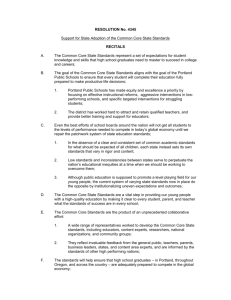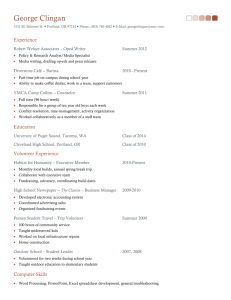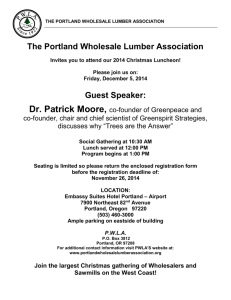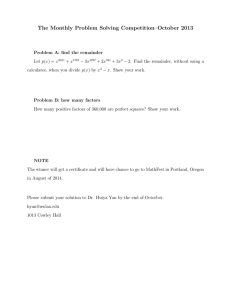From Urban Frontier to Metropolitan Region:
advertisement
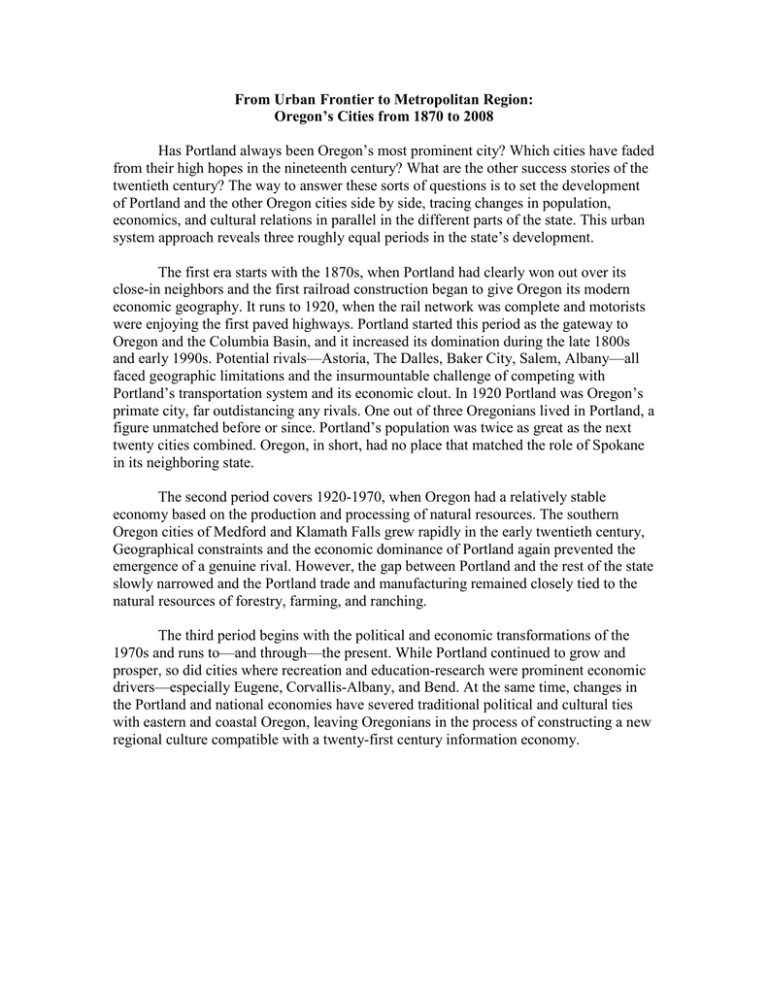
From Urban Frontier to Metropolitan Region: Oregon’s Cities from 1870 to 2008 Has Portland always been Oregon’s most prominent city? Which cities have faded from their high hopes in the nineteenth century? What are the other success stories of the twentieth century? The way to answer these sorts of questions is to set the development of Portland and the other Oregon cities side by side, tracing changes in population, economics, and cultural relations in parallel in the different parts of the state. This urban system approach reveals three roughly equal periods in the state’s development. The first era starts with the 1870s, when Portland had clearly won out over its close-in neighbors and the first railroad construction began to give Oregon its modern economic geography. It runs to 1920, when the rail network was complete and motorists were enjoying the first paved highways. Portland started this period as the gateway to Oregon and the Columbia Basin, and it increased its domination during the late 1800s and early 1990s. Potential rivals—Astoria, The Dalles, Baker City, Salem, Albany—all faced geographic limitations and the insurmountable challenge of competing with Portland’s transportation system and its economic clout. In 1920 Portland was Oregon’s primate city, far outdistancing any rivals. One out of three Oregonians lived in Portland, a figure unmatched before or since. Portland’s population was twice as great as the next twenty cities combined. Oregon, in short, had no place that matched the role of Spokane in its neighboring state. The second period covers 1920-1970, when Oregon had a relatively stable economy based on the production and processing of natural resources. The southern Oregon cities of Medford and Klamath Falls grew rapidly in the early twentieth century, Geographical constraints and the economic dominance of Portland again prevented the emergence of a genuine rival. However, the gap between Portland and the rest of the state slowly narrowed and the Portland trade and manufacturing remained closely tied to the natural resources of forestry, farming, and ranching. The third period begins with the political and economic transformations of the 1970s and runs to—and through—the present. While Portland continued to grow and prosper, so did cities where recreation and education-research were prominent economic drivers—especially Eugene, Corvallis-Albany, and Bend. At the same time, changes in the Portland and national economies have severed traditional political and cultural ties with eastern and coastal Oregon, leaving Oregonians in the process of constructing a new regional culture compatible with a twenty-first century information economy.
